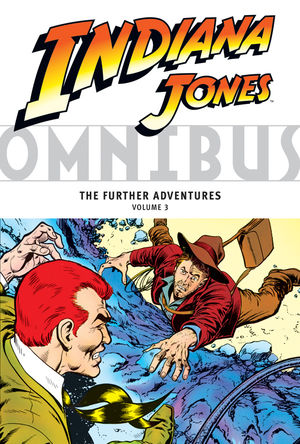
Since the great Strontium Dog returned to the pages of 2000 AD, its creators, John Wagner and Carlos Ezquerra, have been telling stories set at various points in Johnny Alpha's history. Their hero has been a bounty hunter since the end of the war for mutant rights, but in these two stories, set very early in his career, he's better known as a war hero than as a licensed agent for the Search/Destroy Agency.
"Blood Moon" and "The Mork Whisperer," originally serialized last year, shows Johnny working with more of the original gang of Doghouse regulars, including several not seen in the comic for about twenty years. They're set before he met his regular partner, the Viking Wulf Sternhammer, and when not only were all three of the nasty Stix brothers alive, but a cousin of theirs was causing trouble, too.
I believe that "Blood Moon" was the first comic art that Ezquerra finished with the the assistance of his son Hector on inks. They've been working as a team for eighteen months now on this series, Judge Dredd and one of the Battlefields miniseries for Dynamite, and the style's naturally a little different, but never jarringly so. Ezquerra remains one of the best artists in the business, regardless of who's inking him, and his designs for the oddball cast of mutants remains consistently entertaining and silly.
The vibrant, fun art effectively counterpoints a couple of downright grim adventures. "Blood Moon" sees a former colonel in the mutant army still able to inspire beyond the grave, and an interplanetary terrorist campaign waged against norms in his name. In "The Mork Whisperer," one of the galaxy's richest men hires Alpha to track down his estranged wife and mutant sons, but doesn't trust Alpha enough to do the job without surveillance. The former is certainly the more dramatic and action-packed of the two, but I quite like the cerebral pace of the second, and the way Alpha uses logic, ratiocenation and a little time travel to solve a complex mystery that involves android duplicates and mind control.
Honestly, singling out any Strontium Dog book is pretty tough. It's been one of my favorite series, consistently entertaining and very clever, for years. Wagner and the Ezquerras are currently working on a new story set after the reported death of Alpha in the 1990 epic "Final Solution." Two episodes in and it's so darn riveting I can't think straight. I'd highly recommend picking up this book, and then settling in with some digital copies of June's 2000 ADs so you can see where the creators are going next.







